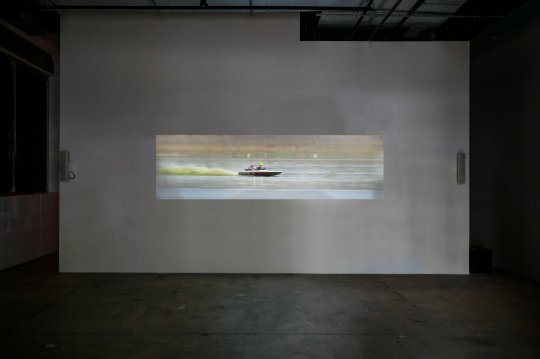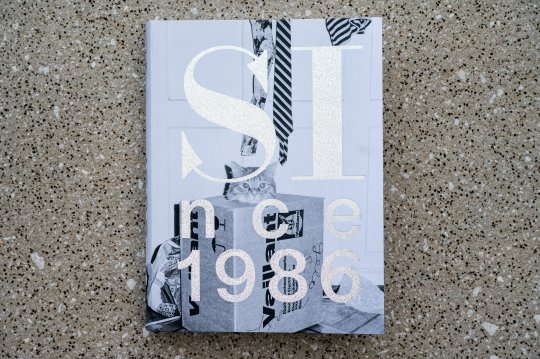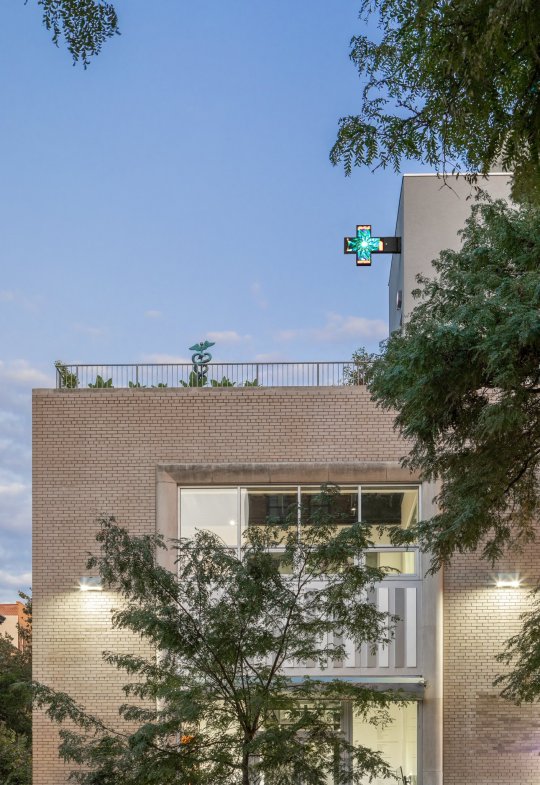#irena haiduk
Explore tagged Tumblr posts
Link
#anothergraphicdotorg#archive#graphicdesign#inspiration#typography#typematters#typedesign#contemporaryart#font#visualart#type#goodtype#artwork#typelove#Serbia
1 note
·
View note
Link
1 note
·
View note
Photo

Urban stills & structures
d14, personal retrospective
Irena Haiduk
8 notes
·
View notes
Quote
... Zeitgenosse darf sich nur derjenige nennen, der sich nicht vom Glanz seines Jahrhunderts blenden lässt, dem es gelingt, seine Schattenseiten, seine tiefste Dunkelheit wahrzunehmen. ... Aber was heißt "die Finsternis sehen", "die Dunkelheit wahrnehmen"? Eine erste Antwort gibt uns die Neurophysiologie des Sehens. Was geschieht, wenn wir uns in einem lichtlosen Raum befinden oder die Augen schließen? Wie erklärt sich die Dunkelheit, die wir dann sehen? Den Neurophysiologen zufolge enthemmt die Abwesenheit von Licht eine Reihe peripherer, off-cell genannter Zellen der Retina, die aktiv werden und jene besondere Sehweise erzeugen, die wir Dunkelheit nennen. ... Auf unsere These von der Dunkelheit des Zeitgenössischen angewendet heisst das, dass Dunkelheit nicht eine Form der Untätigkeit oder Passivität ist, sondern eine besondere Aktivität, ein spezifisches Vermögen voraussetzt. In unserem Fall entspricht sie einer Neutralisierung des von der Epoche ausstrahlenden Lichts, das ihre Finsternis, ihre eigenste Dunkelheit verbergen soll, die jedoch von jenem Licht nicht zu trennen sind.... Zeitgenosse ist derjenige, dem die Strahlen der Finsternis seiner Zeit frontal ins Gesicht fallen
Giorgio Agamben, “Nacktheiten”, 2011 - gefunden aufgrund eines Hinweises von Irena Knezevic/ Haiduk in einem podcast aus dem Jahr 2013, in dem sie für sich in Anspruch nimmt, in ihrer künstlerischen Arbeit wie dieser “off-cell” Mechanismus zu arbeiten
1 note
·
View note
Photo

Irena Haiduk, Nine Hour Delay (2012-2017)
http://www.we-find-wildness.com/2017/03/irena-haiduk-against-biography/
4 notes
·
View notes
Photo

https://hellome.studio/irena-haiduk-bon-ton-mais-non-edition/
31 notes
·
View notes
Photo

HelloMe puts the outcome of Irena Haiduk’s activity into a book
5 notes
·
View notes
Photo

Bon Ton Mais Non, Irena Haiduk
Edited by Irena Haiduk Designed by HelloMe Published by Yugoexport Oral Corporation
210 × 315 mm Hardcover, embossed English Second edition, 1000 copies Printed in EU
91 notes
·
View notes
Photo

Irena Haiduk (Belgrado, 1982)
0 notes
Link
“
The import-export business of making history demands an equivalence, a loyalty, and a familial solidarity between people and things. Such skills are best honed in conditions of blindness, where we cannot immediately tell what is in the room with us and whether it is alive or dead. Yugoexport is a blind, non-aligned, oral corporation. Incorporated in the United States (where corporations are people), launched in Paris and headquartered in Belgrade, she is a copy or an avatar of Jugoeksport, a defunct Yugoslav apparel manufacturer and weapons exporter. Since the dissolution of Yugoslavia in 2003, ‘Yug’ is a vacant space, and Yugoexport occupies it by returning to the original meaning of yug or jug which is south. The oral corporation mounts production on sur-national scale from this cardinal direction, from the Balkans and the old Roman trade and military route, the Via Militaris. Yugoexport’s process of in-corporation continues throughout documenta 14 in Kassel. In June 2017, a marble stela with Yugoexport’s Articles of In-Corporation appeared by the former headquarters of Jugoeksport in Kolarčeva Street, Belgrade. It was broken and disseminated on July 1, 2017. With this act the copy assumed the status of the original. Welcome to a terrain of production from the South.
”
0 notes
Photo


Bauen-Backen-Baden © Irena Haiduk
https://www.urbanekuensteruhr.de/de/project/healing-project-2018-ongoing
GE
06 . 2022
0 notes
Text
MEET SIMON CASTETS
Director, Swiss Institute. Contemporary Art New York

Simon Castets has been at the helm of the beloved non-profit contemporary art space Swiss Institute for the past seven years. Founded in 1986, Swiss Institute is dedicated to promoting forward-thinking and experimental art making through innovative exhibitions, education, and programs. It serves as a platform for emerging Swiss and international artists, catalyzes new contexts for celebrated work, and fosters appreciation for under-recognized positions. After a several months-long hiatus due to COVID-19, Swiss Institute reopened its doors on September 9 with the time-based media program TENET. We recently caught up with Simon to discuss the effects of the pandemic, SI’s upcoming exhibitions and its dedication to community engagement.
Swiss Institute was closed for months due to COVID-19, how did you experience the lockdown? Are you able to move forward with the planned program or has the pandemic fundamentally changed your work?
Lockdown was a frightening time for many New Yorkers, but it also was an unprecedented moment of togetherness. I can speak from my experience at SI-- but when NYC went into lockdown on March 20th, I immediately entered into a conversation with fellow directors of contemporary arts nonprofits about how we could triumph over these unknown, looming threats. It is thanks to our working together, sharing ideas and information, that we managed to weather the storm.
As far as our program goes, we had to do a lot of reshuffling. Our Irena Haiduk and Jan Kiefer exhibitions were forced to close early, and our Jeremy Shaw exhibition has been postponed until 2022 due to sustained travel restrictions. These are the challenges of working with international artists. But it's also provided an opportunity to work in a different capacity. With artists Reetu Sattar and Yu Honglei, SI and the New York Public Library offered two artist talks in foreign languages, Bengali and Mandarin Chinese, respectively. We have conceived of a long-term, three part digital project with Sable Elyse Smith, who installed a public sculpture on our roof as part of our SI ONSITE series of semi-permanent installations and will curate our 2022 Architecture and Design Series. We are currently planning a full-building group exhibition that explores the concept of haunting.

Image: Sable Elyse Smith, BACKBEND, 2019. Powder coated aluminum. Courtesy of the artist; JTT, New York; and Carlos Ishikawa, London. Photo by Charlie Rubin
Your current time-based media program TENET is particularly fitting for this moment, how did it come about? Was it conceived during the pandemic?
TENET is a product of the pandemic that came about when we realized our summer exhibitions were not possible, and that we needed a degree of flexibility in the type of exhibitions we were going to stage at SI. In many ways, it draws on the institution's history of unorthodox group exhibitions, perhaps most obviously by borrowing its title from the summer's most hotly anticipated, but conspicuously absent, blockbuster. We wanted to create a space where these excellent, underseen time-based media works (three single channel videos and one two-channel sound installation) could be easily accessed by our East Village community as a variation on a walk-in cinema.
Although they initially appear quite different from one another in form, all four works engage with notions of time: its repetition, acceleration, slowing and manipulation. In a year in which time as we knew it radically changed, this felt like an exhibition in which our audiences could take solace, but also discover works by international artists that resonated within this unprecedented moment.

Image: TENET installation view, photo by Charlie Rubin, courtesy of Swiss Institute
The recent publication SInce 1986 chronicles the history of Swiss Institute, how has the institution evolved over the years? And how do you envision SI’s future?
One of the ideas that comes through in SInce 1986 is that in spite of SI's movement through the city and expansion of its programs and offerings, is that Swiss Institute has always kept carrying on the same spirit of experimentation. Our national affiliation has always been a bit of an anomaly within the nonprofit landscape of New York City, but throughout our history, SI has always played this to our advantage. This institutional ambiguity that SI has accrued in our history as an "outsider" has always given the organization the freedom to push boundaries and experiment, and always place the artist's wishes first. Our enduring support of female artists has been a cornerstone of our programming, but has expanded significantly in the past five years.
Perhaps what has most evidently changed since our founding is that we are more than ever focused on the communities we serve, always free-of-charge. Much of this came from securing a long-term home in the East Village-- a Manhattan neighborhood with a deep, complex artistic lineage. Upon moving to St. Marks Place, we established an education program for families, teens and older adults, and brought on a community engagement advisor who liaises with other East Village-based nonprofit organizations of all kinds. Central to SI's mission is providing a platform for artists to showcase their innovative work and ideas, and a large part of that is cultivating an audience that feels at home with SI.

Image: SInce 1986, photo by Charlie Rubin, courtesy of Swiss Institute
What does SI have in store for us over the next few months? Is there an exhibition or artist that you are particularly excited about at the moment?
In early November, we will open our exhibition HAUNTED HAUS that features some of today's most exciting young Swiss and Switzerland-based artists including Alfatih, James Bantone, Milena Langer, Maïté Chénière, Ivan Mitrovic, Melanie Akaret, Cassidy Toner, Gaia Vincensini, Claire Van Lubeek, Alan Schmalz, Gabriele Garavaglia, Dorota Gawęda and Eglė Kulbokaitė. Later that month we will open a two-person presentation of the work of Sitara Abuzar Ghaznawi and under recognized Dadaist Emmy Hennings in our library space. In January we will open our annual architecture and design exhibition, curated by Puerto Rican-Kuwaiti artist Alia Farid. Entitled The Space Between Classrooms, the exhibition engages with the legacy of Alfred Roth-designed schools in Kuwait, and in a broader sense, the possibilities of unlearning as articulated by philosopher Ivan Illich. We are also very excited to open the first US presentation of Welsh artist Angharad Williams and Swiss artist Mathis Gasser entitled Hergest: Trem. As I mentioned, we are also working with Sable Elyse Smith on a digital initiative that takes the form of both a magazine and a vinyl mixtape. The first issue, Fear, launches on October 26 and features both new and old interdisciplinary work by Jessica Lynne, Paul Peiffer, Jibade-Khalil Huffman, Johan Grimonprez and Jason Moran.

Image: Swiss Institute, photo by Daniel Pérez, courtesy of Swiss Institute
0 notes
Photo



Bon Ton Mais Non, Irena Haiduk. Designed by HelloMe Studio
8 notes
·
View notes
Text
POPULATION
Abounaddara Akinbode Akinbiyi Nevin Aladağ Danai Anesiadou Andreas Angelidakis Aristide Antonas Rasheed Araeen Ariuntugs Tserenpil Michel Auder Alexandra Bachzetsis Nairy Baghramian Sammy Baloji Arben Basha Rebecca Belmore Sokol Beqiri Roger Bernat Bili Bidjocka Ross Birrell Llambi Blido Nomin Bold Pavel Brăila Geta Brătescu Miriam Cahn María Magdalena Campos-Pons and Neil Leonard Vija Celmins Banu Cennetoğlu Panos Charalambous Nikhil Chopra Ciudad Abierta Marie Cool Fabio Balducci Anna Daučíková Moyra Davey Yael Davids Agnes Denes Manthia Diawara Beau Dick (1955–2017) Maria Eichhorn Hans Eijkelboom Bonita Ely Theo Eshetu Aboubakar Fofana Peter Friedl Guillermo Galindo Regina José Galindo Israel Galván, Niño de Elche, and Pedro G. Romero Daniel García Andújar Pélagie Gbaguidi Apostolos Georgiou Yervant Gianikian and Angela Ricci Lucchi Gauri Gill Marina Gioti Beatriz González Douglas Gordon Hans Haacke Constantinos Hadzinikolaou Irena Haiduk Ganesh Haloi Anna Halprin Dale Harding David Harding Maria Hassabi Edi Hila Susan Hiller Hiwa K Olaf Holzapfel Gordon Hookey iQhiya Sanja Iveković Amar Kanwar Romuald Karmakar Andreas Ragnar Kassapis Kettly Noël Bouchra Khalili Khvay Samnang Daniel Knorr Katalin Ladik Lala Rukh (1948–2017) David Lamelas Rick Lowe Alvin Lucier Ibrahim Mahama Narimane Mari Mata Aho Collective Mattin Jonas Mekas Angela Melitopoulos Phia Ménard Lala Meredith-Vula Gernot Minke Marta Minujín Naeem Mohaiemen Hasan Nallbani Joar Nango Rosalind Nashashibi and Nashashibi/Skaer Negros Tou Moria Otobong Nkanga Emeka Ogboh Olu Oguibe Rainer Oldendorf Pauline Oliveros (1932–2016) Joaquín Orellana Mejía Christos Papoulias Véréna Paravel and Lucien Castaing-Taylor Benjamin Patterson (1934–2016) Dan Peterman Angelo Plessas Nathan Pohio Pope.L Postcommodity Prinz Gholam R. H. Quaytman Gerhard Richter Abel Rodríguez Tracey Rose Roee Rosen Arin Rungjang Ben Russell Georgia Sagri Máret Ánne Sara Ashley Hans Scheirl Marilou Schultz David Schutter Algirdas Šeškus Nilima Sheikh Ahlam Shibli Zef Shoshi Mounira Al Solh Annie Sprinkle and Beth Stephens Eva Stefani K. G. Subramanyan (1924–2016) Vivian Suter El Hadji Sy Sámi Artist Group (Keviselie/Hans Ragnar Mathisen, Britta Marakatt-Labba, Synnøve Persen) Terre Thaemlitz Piotr Uklański Jakob Ullmann Antonio Vega Macotela Cecilia Vicuña Annie Vigier & Franck Apertet (les gens d’Uterpan) Wang Bing Lois Weinberger Stanley Whitney Elisabeth Wild Ruth Wolf-Rehfeldt Ulrich Wüst Zafos Xagoraris Sergio Zevallos Mary Zygouri Artur Żmijewski
Zainul Abedin (1914–1976) Stephen Antonakos (1926–2013) Arseny Avraamov (1886–1944) Ernst Barlach (1870–1938) Étienne Baudet (ca. 1638–1711) Samuel Beckett (1906–1989) Franz Boas (1858–1942) Arnold Bode (1900–1977) Lorenza Böttner (1959–1994) Marcel Broodthaers (1924–1976) Lucius Burckhardt (1925–2003) Abdurrahim Buza (1905–1986) Vlassis Caniaris (1928–2011) Sotir Capo (1934–2012) Cornelius Cardew (1936–1981) Ulises Carrión (1941–1989) Agim Çavdarbasha (1944–1999) Chittaprosad (1915–1978) Jani Christou (1926–1970) Chryssa (1933–2013) André du Colombier (1952–2003) Gustave Courbet (1819–1877) Christopher D’Arcangelo (1955–1979) Bia Davou (1932–1996) Maya Deren (1917–1961) Ioannis Despotopoulos (1903–1992) Thomas Dick (1877–1927) Carl Friedrich Echtermeier (1845–1910) Maria Ender (1897–1942) Forough Farrokhzad (1935–1967) Conrad Felixmüller (1897–1977) Pavel Filonov (1883–1941) Niccolò di Pietro Gerini (1340–1414) Tomislav Gotovac (1937–2010) Jacob and Wilhelm Grimm (1785–1863, 1786–1859) Ludwig Emil Grimm (1790–1863) Giovanni di ser Giovanni Guidi (1406–1486) Cornelia Gurlitt (1890–1919) Louis Gurlitt (1812–1897) Nikos Hadjikyriakos-Ghika (1906–1994) Oskar Hansen (1922–2005) Sedje Hémon (1923–2011) Theodor Heuss (1884–1963) Karl Hofer (1878–1955) Ralph Hotere (1931–2013) Albert Jaern (1893–1949) Iver Jåks (1932–2007) Sunil Janah (1918–2012) Alexander Kalderach (1880–1965) Tshibumba Kanda Matulu (1947–1981 disappeared) Leo von Klenze (1784–1864) Kel Kodheli (1918–2006) Louis Kolitz (1845–1914) Spiro Kristo (1936–2011) KSYME-CMRC (founded 1979) Anna “Asja” Lācis (1891–1979) Maria Lai (1919–2013) Yves Laloy (1920–1999) Valery Pavlovich Lamakh (1925–1978) George Lappas (1950–2016) Karl Leyhausen (1899–1931) Max Liebermann (1847–1935) George Maciunas (1931–1978) Ernest Mancoba (1904–2002) Oscar Masotta (1930–1979) Mikhail Matyushin (1861–1934) Pandi Mele (1939–2015) Tina Modotti (1896–1942) Benode Behari Mukherjee (1904–1980) Krzysztof Niemczyk (1938–1994) Ivan Peries (1921–1988) David Perlov (1930–2003) André Pierre (1915–2005) Dimitris Pikionis (1887–1968) Dmitri Prigov (1940–2007) Hasan Reçi (1914–1980) W. Richter Anne Charlotte Robertson (1949–2012) Erna Rosenstein (1913–2004) August Wilhelm and Friedrich Schlegel (1767–1845, 1772–1829) Bruno Schulz (1892–1942) Scratch Orchestra (1969–1974) Tom Seidmann-Freud (1892–1930) Allan Sekula (1951–2013) Baldugiin Sharav (1869–1939) Amrita Sher-Gil (1913–1941) Vadim Sidur (1924–1986) August Spies (1855–1887) Foto Stamo (1916–1989) Gani Strazimiri (1915–1993) Władysław Strzemiński (1893–1952) Alina Szapocznikow (1926–1973) Yannis Tsarouchis (1910–1989) Antonio Vidal (1928–2013) Albert Weisgerber (1878–1915) Lionel Wendt (1900–1944) Johann Joachim Winckelmann (1717–1768) Fritz Winter (1905–1976) Basil Wright (1907–1987) Andrzej Wróblewski (1927–1957) Ivan Wyschnegradsky (1893–1979) Iannis Xenakis (1922–2001) Androniqi Zengo Antoniu (1913–2000) Pierre Zucca (1943–1995)
Documenta14, 2017
11 notes
·
View notes
Photo



1. Christopher Kulendran, 60 Millions American Can’t Be Wrong, 2016.
So how might a more liquid form of citizenship be imagined in an age of technologically accelerated dislocation? For his exhibition at Kunstverein Harburger Bahnhof, Christopher Kulendran Thomas presents New Eelam, a startup founded by the artist to develop a global housing subscription based on collective ownership. Together with his founding partners, Thomas proposes a long-term strategy for how a new economic model could evolve, without friction, out of the present system—through the luxury of communalism rather than private property. With this post-capitalist venture, Thomas imagines the future of citizenship beyond national borders, asking how a state could be constituted in corporate form and how a brand might communicate as an artist.
2. Christopher Kulendran & Annika Kuhlmann, New Eelman, 2017.
Developed in collaboration with curator Annika Kuhlmann, New Eelam originates from contemporary art’s role in reimagining cities, from styles of living to forms of labour. New Eelam’s ‘concept space’ at Spike Island – part of the company’s research and development process – is a sci-fi vision of an alternate reality, featuring technologies such as hydroponic home-farming systems presented here as living sculptures. Within this immersive environment, visitors can view New Eelam’s speculative documentary, 60 million Americans can’t be wrong, which introduces the post-capitalist housing proposal. Taking as a departure point the once self-governed – but now non-existent – homeland from which the artist’s Sri Lankan Tamil family originates, the film looks at the political and historical horizons of the venture. The exhibition also features a collection of micro videos that explore how a new economic model could emerge out of the existing economic system rather than in opposition to it.
3. Irena Haiduk, Spinal Discipline, 2017.
0 notes